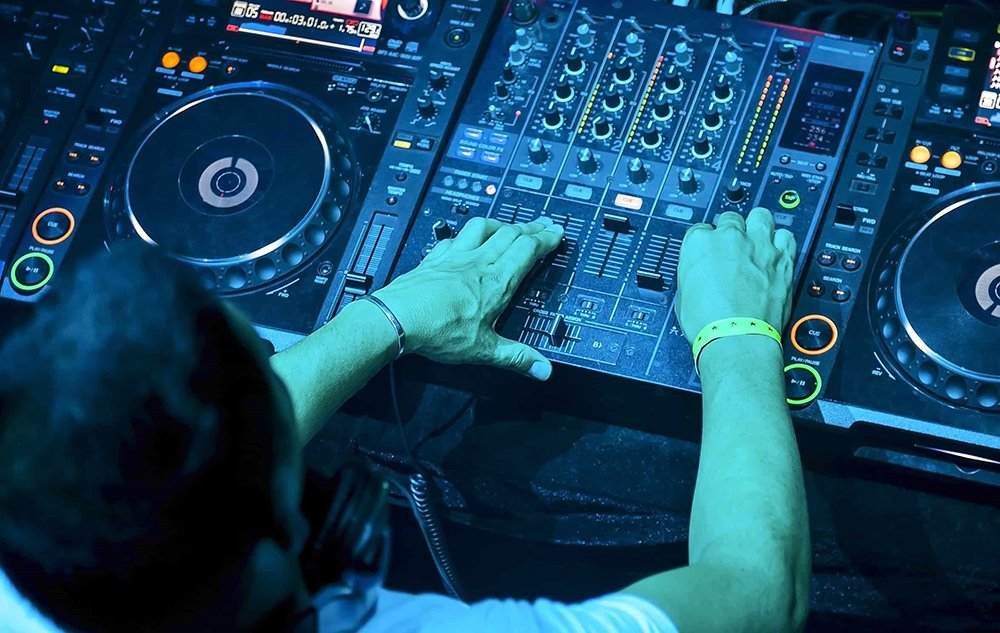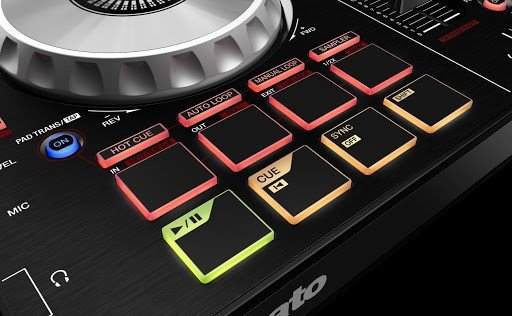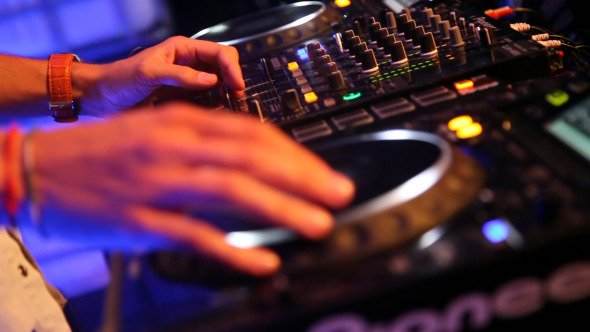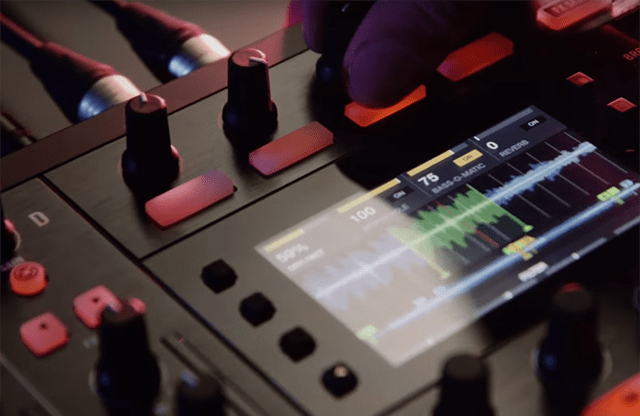Disclosure: This post contains affiliate links, which means we may earn a commission if you purchase through our links at no extra cost to you.
Simplistically speaking, a DJ Mixer is there to do what it is named for i.e., To mix music of different sources. But it is the job of the DJ to make the mixer do it efficiently and effectively.
DJs use their skills in beatmatching, sequencing, scratching, count bars, and equalizing. Here is a guide to everything you need to know about a mixer.
Table of Contents
What exactly does a mixer do?
A DJ Mixer controls audio signals from different sources to produce new mixed audio by using transition and mixing technologies.
It receives the signals in the input channels and combines them to be sent through the master output.
You can use it for scratching or for making transitions from one track to the other with fading out and fading in options.
There is a common misconception that the mixer produces the sound. It merely modifies the sounds received in the input.
The mixer allows a DJ to perform various types of special tricks on the incoming music. The headphone lets him cue the audio of different channels for preview.
The mixer also comes with many types of equalizers and controls to manipulate the audio.
The size of a DJ mixer instrument is tiny as compared to the size of sound recording systems, which can have 24 to 96 types of inputs.
Our small DJ mixer can have two or four inputs as audio sources.
These sources are mostly consisting of CDJs, Vinyl turntables, multi-players, and DVS music from a laptop with compatible software.
You need to set up a mixer before using it properly. Let us see how to set up a mixer and how to use it effectively.
Difference between a DJ Mixer and a DJ Controller
Both of the devices are similar. But a controller provides the additional feature of controlling the software and the Midi equipment.
DJ controllers are stand-alone units and can work without the need for any input of audio sources.
Mixer Setup
In order to use a DJ Mixer properly, we need to set up all the equipment correctly.
You need to connect the speakers, turntables, CD Players, multi-players, headphones, laptop software with a sound card, etc.
Make sure to match red and white plugs to red and white connectors, respectively.
In a two-channel mixer, we should connect the first channel to the left side deck and second channel to the right-side deck.
For a four-channel mixer, it is the same thing i.e., Third to the left side and fourth to the right side.
After connecting all the instruments, do not merely start the mixer. After you connect the power cord, you need to follow a set of on-off sequences to avoid damage to your valuable equipment.
Also, make sure to connect the earth wire of the turntable to the ground connector of the mixer to rule out any eventuality.
With the help of a mixer, music stream from different devices may be manipulated before sending them to the speakers or monitors which are connected.
How to control a DJ Mixer?
With time, the uses of a DJ mixer have been evolving. Earlier, it used to be a simple device to mix different audio sources.
But now advanced mixers of the modern age are having many features which are quite complex. But we will discuss the basic and fundamental features of a DJ Mixer.
1. Channel Fader

Any DJ Mixer today has a minimum of two channels. We get channel faders along with the channels. They are there to basically control the volume flow.
The mixer has double functionality of connecting two types of devices on each channel. E.g. a turntable plus a CDJ on one channel.
But the problem is that you can not play both the devices at the same time. We need to switch between the two devices.
So, you can have two turntables and two CDJs connected on two channels but you will be constrained to mix only two devices at any point in time.
2. The Crossfader

It helps a DJ to rapidly cut from one channel to the other one. Which means that a DJ can make rapid cut or transition from one channel to another.
So, the sound fades from one channel to the other. The quality of crossfader changes as per the price of the mixer.
The mixers for scratching usually have better crossfaders as compared to normal ones because these crossfaders need to be used in a stronger way than a normal dance style DJ mixer.
Scratching is easier if the channel faders are not very heavy. That makes a great turntablism show.
3. Master Fader

Master fader is the total of all the channels after mixing when they are about to leave the mixer system.
This is the ultimate volume control for your mixer because it is the endpoint of the volume control when the music goes out to the connected amplifiers or speaker systems.
4. The Equaliser

They are also known as EQ faders in Rotarian mode. They seem like dial or a knob.
You can change three types of frequencies with 3 band EQ controls. These are popularly known as bass, treble and mid-frequency.
More pricey mixers in the high-end range offer more flexibility with the control of frequencies mentioned.
5. Input and output

This is about connecting the audio equipment into the mixer and out of the mixer.
The turntable and/or CDJ are the input examples and the output of a mixer is generally channeled into an amplifier or PA system or active speakers or booth monitors.
Most of the mixers have output numbering at least two. The mixer can be manufactured to be feeding into a particular equipment type having a strict usage.
Some of the DJ equipment in the mixer category provide an output called the tape out.
This allows the DJ to send the output of the audio signal to a device for the purpose of recording.
Some mixers have inbuilt limiters on this output to prevent any clipping during the process of recording. Clipping happens if the volume level is extremely loud in a mixer device.
The sounds get distorted and become horrible. The clipping spoils the entire mood on the dance floor as it wrecks the quality of sound. Another type of output sends a portion of the audio stream to FX control.
DJs can add extra effects with the help of FX which are popularly known as Phaser, flanging, delaying, echoing, etc.
6. VU and meters

These meters are there to check the level of the volume. They are basically providing a type of graphical point of reference to the DJs so that they can guess the volume of every channel and equalize it. These meters mostly measure the sound levels in decibels or dB.
As a thumb rule while cueing and before mixing is finalized, the decibel level of audio should be a maximum of 2.0 dB when the music is playing at the highest volume level.
The range of 0 to 2 dB gives enough headroom during mixing without potentially damaging the instruments.
7. FX unit

Latest DJ mixer now comes with a state-of-art inbuilt FX system. They allow you to add special sound effects like echo, delay, reverb and filter.
Not all the mixers have a built-in FX system and you need not worry about that because you can always add an additional FX unit externally.
8. Headphone Line

This helps in monitoring different audio channels by using good quality headphones.
Before the live performance, headphones are helpful in cueing, testing and planning. A decent DJ mixer should provide a small crossfader on the headphone panel itself.
This way, the DJs can simulate the mixing scene, match the beats by letting them play at the same tempo, and setting the correct EQ before finalizing.
9. Microphone

Almost each and every DJ mixer comes with a microphone option. This can be plugged into the mixer to mix the sound with music or can play over the music.
With the use of talk over mode, the mixer automatically detects that a mic has been connected and drop the volume on the other channels.
This is particularly helpful in making announcements over the music being played. Some latest mixers have their own EQ fader for use with microphones.
They are handy in cutting the bass low when there is feedback while using a mic.
10. Four-channel mixers

Four-channel mixers are obviously more expensive than the two-channel mixers.
If you plan to upgrade in the future, it is better to straightway buy a 4-channel mixer and use only two channels of the mixer by closing the faders on channel 3 and channel 4.
Later on, when you buy more equipment like a turntable or a multiplayer, you can very well start using all the channels.
You can do mixing on 4 separate channels with the help of software like Rekordbox. With 4 channels, you can play music from simultaneously 4 players.
It could be 2 turntables and 2 multi-players or any combination of devices. Although a 4-channel mixer may look complex as compared to a 2-channel mixer, there is not much difference except the additional knobs for two extra channels.
These mixers normally have extra features of effects, booth control, and microphone control.
The effects panel also known as FX lets you add sounds to spice up the mixing.
They include delay, flanger, phaser, echo, and reverb, spiral, low pass filters, high pass filters, etc.
The booth control panel lets you have control of booth monitors as discussed earlier.
The microphone panel lets you add more functionality in terms of providing echo on the voice of mic, and maybe three outputs for DJ, MC, and Karaoke purpose.
The microphone has a gain knob and EQ section to customize the sound of your voice.
The filter knob works as a two in one purpose. One is the high pass filter and the other one is a low pass filter.
It may be helpful in coloring the audio sounds and to scoop out a few frequencies during the transition and build up.
11. Additional options
When you go for high-end mixers, the number of features begins to increase. These could include a booth output or extra master output option.
They can be used for controlling your mixes at a different volume or for externally recording the mixes.
You also get a USB out in some advanced mixers for the MIDI computer controller or as an audio interface. On most models of the Pioneer, you also get an ethernet hub that may be used to link all of the CDJs together with the mixer.
They can exchange information from USB drives or BPM information.
Conclusion
So now you understand what a mixer does and how to use it. You have volume controls to control the volume of the master and each channel.
Crossfaders and channel faders let you mix smoothly by timely fading in or fading out, Trim and EQ control let you manage channel gains and frequencies.
VU monitors are there to avoid damage to the equipment by monitoring the volume levels.
DJ headphones are helpful in cueing and mixing at the right moment.
Then you also have to learn to use a 4-channel mixer with special effects and booth/ microphone control panels.
A mixer basically mixes the sound of tracks from different audio sources and lets you fine-tune the mixing with the help of numerous controls so that the audience gets the best music experience.
The mixer is one of the most useful tools for use with DJs. Without a mixer, they will not have a way of properly blending the audio sources.
Although the mixers come in many sizes and shapes, the main job of a mixer remains the same: to keep the dance floor moving with DJ controlling all the strings.
Where there is a mixer, there is a music output controlled, manipulated and evolved by the experienced DJs. They are made for each other.



